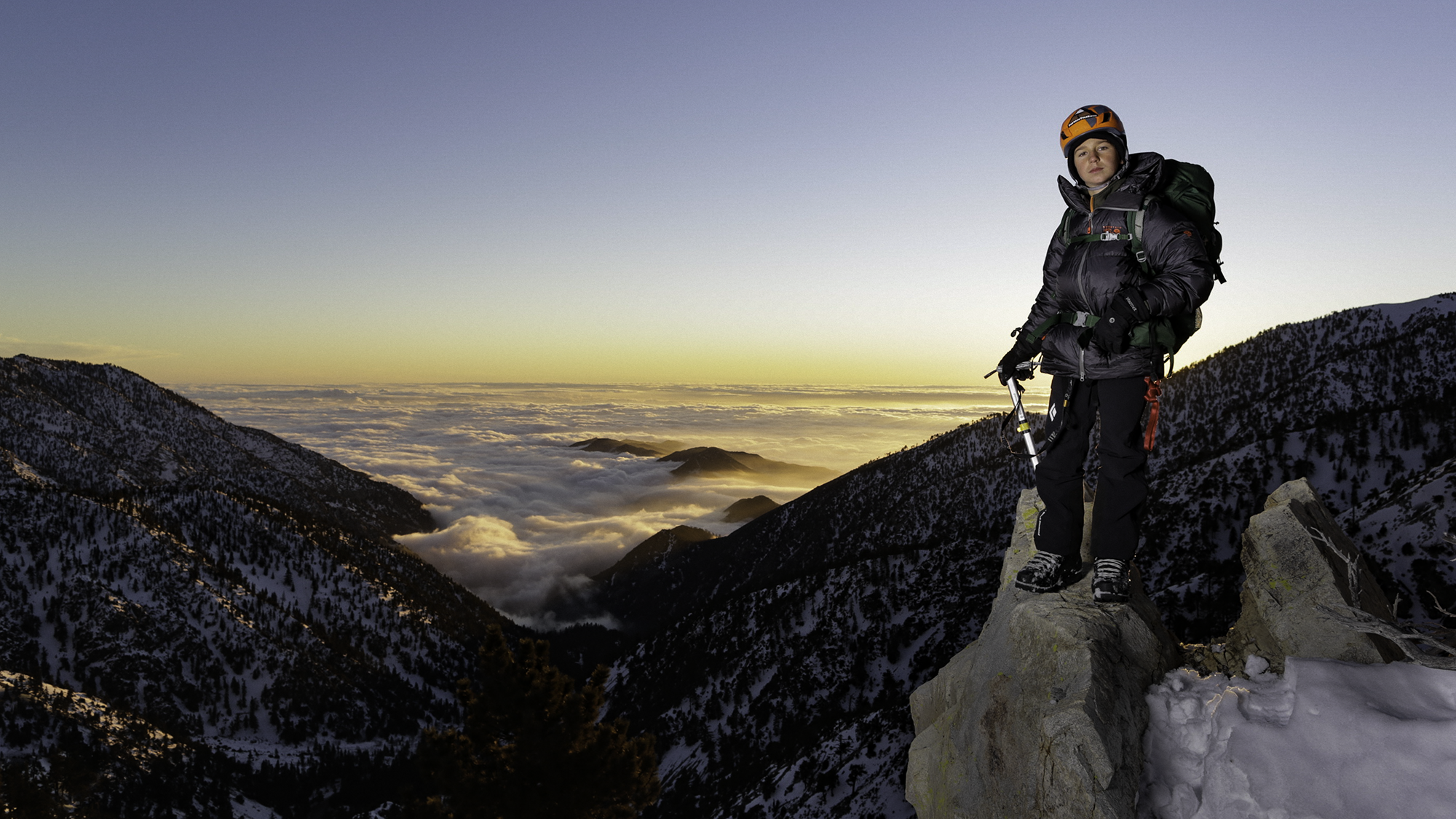WE MADE A DEAL: one Jolly Rancher for every mile.
After bushwhacking for 30 minutes, my daughter and I sat on a steep cliff face for the second time that morning, waiting for my husband to find a barely marked trail. We agreed to amend the deal: Now it was one Jolly Rancher for every half mile.
Hours later, I couldn’t argue with the bargain. Limber and whitebark pines, dead and fallen from wind and age, crisscrossed everywhere we tried walking. Hiking started to feel more and more like a chore.
The trail on the map made it look as if we would climb only about 500 feet before crossing a saddle, but maps of Wyoming backcountry trails are only so accurate, and maps of Wind River Indian Reservation trails are even less precise. So we kept hiking, finally reaching what we hoped was the top after 1,200 vertical feet.
A few miles later, we finally reached one of those saddles. Three men on horseback approached from the other side, an outfitter and two tribal game wardens. They checked our fishing licenses and asked where we’d come from. When they heard, they remarked on how they can’t keep up with clearing deadfall from the trails—there’s too much. Then one warden asked my daughter, Miriam, how old she was. She craned her neck to look up at him as he sat on his chocolate-colored horse, peered from underneath her blue sun hat with pink seashells, smiled her gap-toothed smile, and told him. She was 6.
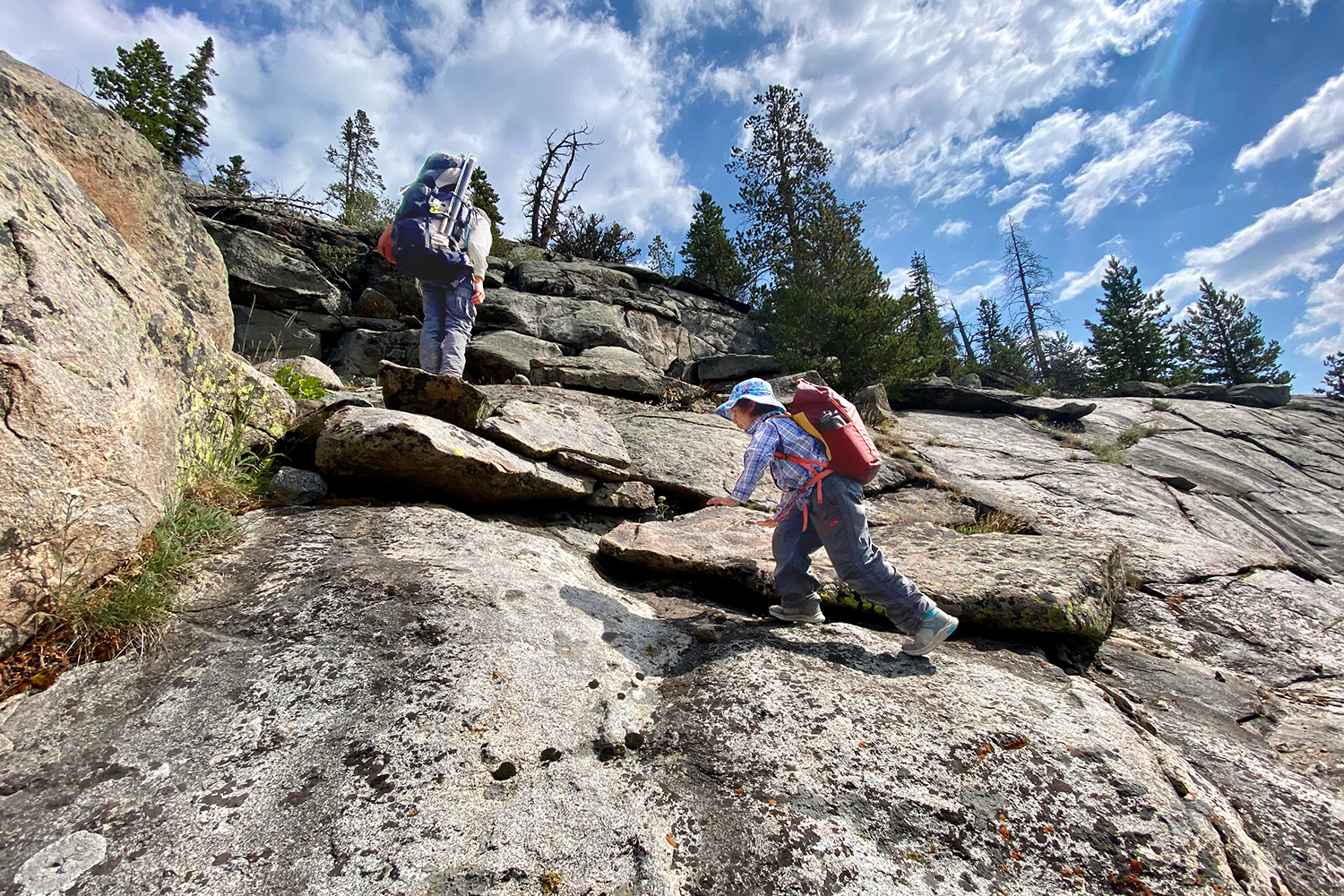
He pulled out his cell phone, looked at me, and asked if he could take her picture.
“I’ve never seen anyone so young walk all the way in here,” he said.
I felt proud at that, and so did Miriam. She’d come a long way, and we still had a long way to go. Four Jolly Ranchers seemed like a fair deal. But that night, as I tried to fall asleep in the tent, a hard, two-day hike from our truck and the trailhead, I wondered what the hell I had been thinking.
The Benefits of the Outdoors
There’s a growing movement to take kids on extreme adventures, and you’ve likely seen stories about kids accomplishing feats many adults aren’t capable of, like the 14-year-old who ran a marathon in every state and on every continent, the 13-year-old who completed the North American sheep grand slam, and the 5-year-old who hiked the entire Appalachian Trail. The type of parenting that pushes a kid to accomplish such feats draws both praise and criticism. Child Protective Services even visited one family of eight after the parents and kids (the youngest was 6) became the largest family ever to complete the 2,200-mile AT.
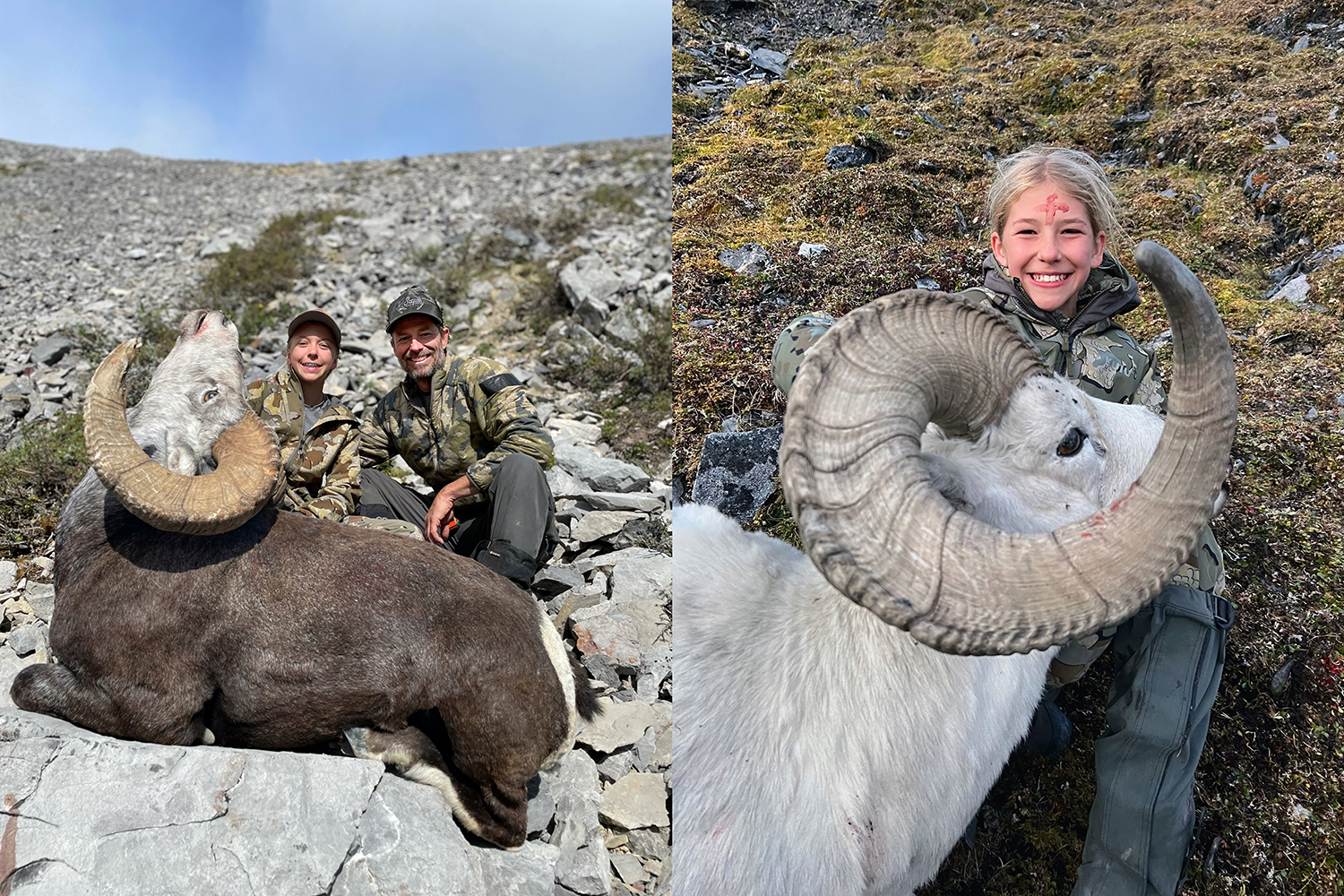
At its worst, this type of adventuring looks a bit like a stunt, a way for the parent to capture attention through their child. But kids do need to experience adventure in its purest form. Adventures help kids (and adults) realize what they can do even when the task—hiking, climbing, facing nasty weather—sounds impossible. It helps kids face their fears. Working through challenges together also forges bonds in families that might not form otherwise.
Worth the Risk
Few people will make the case that the outdoors isn’t good for kids.
Studies from Harvard talk about the importance of sun for vitamin D and how exercise encourages play and working creatively to solve problems—especially in groups. Medical institutions like Sanford Health list getting outdoors as a way to “build physically healthier children” and “improve sensory skills.” Yet more studies talk about the outdoors fostering creativity, resilience, and (as outdoorsmen and -women already know) happiness.
But most of those benefits can come from time spent in a city park or the backyard. My 6-year-old doesn’t need to venture deep into a wilderness to get her daily allowance of vitamin D. Kids still need adventure, though, argues Belinda Kirk, a British explorer and author of the 2021 book Adventure Revolution: The Life-Changing Power of Choosing Challenge.
“For 20 years, I saw the transformational effect of adventure,” Kirk says. “It’s the way it inspires us, heals us, helps us grow up, particularly for children and young adults to face fear, find out what we’re capable of. I think that’s the biggest gift adventure can give you.”
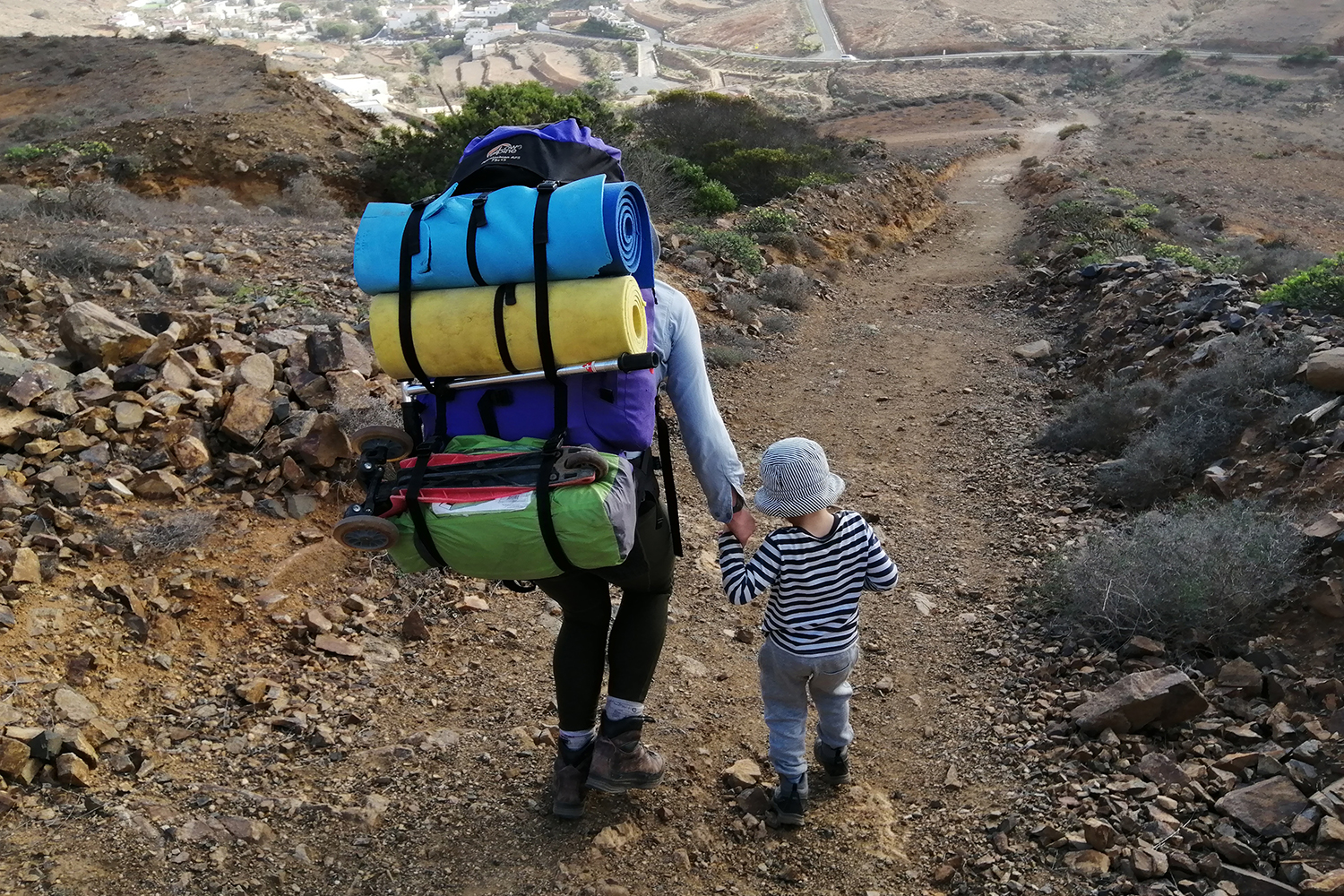
Kirk knows adventure. She made the Guinness World Records book for rowing unsupported around Britain, and she once walked across Nicaragua. And when she and her partner had a son, she also knew she wanted to introduce him to those same healing and resilience-building experiences.
Last year, when he was 4, the Kirk family trekked across the Canary Islands, walking 150 miles over five weeks with periodic stops at beaches to rest and recover.
“It was a great way to redefine us as a family, to go on an adventure together,” she says. “Our real aim wasn’t to cross the Canary Islands. It was to become closer.”
“Every day as a parent you’re evaluating risk. When they start crawling or riding a bike, you’re always working out, ‘How much do I let them go?’ You know you have to in order for them to learn, but also you want to keep them safe,” she says. “I became interested in how we get that right and what happens when we don’t get it right in terms of children’s mental health.”
She defines adventure as exposure to risks, thrills, feelings of excitement, and even some fear. The experiences that give kids—and us parents—sweaty palms and fluttery stomachs build resilience. But she also found a line.
“If you go too far outside your comfort zone, the fear dominates,” she says. “And then it’s not fun or beneficial psychologically.”
Pushing the Limits
David Willms, his wife, Kiersti, and their three children, ages 4, 9, and 12, stood on the shore of Isle Royale in the middle of Lake Superior in 2021 with a week’s worth of gear and watched as a boat puttered off into the distance. They looked at each other and the trail and knew they had seven days and six nights to cross what Willms thought would be 35 miles. Another boat would pick them up on the other side. Doable, he and his wife thought.
What they didn’t know was that the trip would become 55 miles, Willms would spill a pot of boiling water down his boot and watch as the skin blistered, their 4-year-old son would scream in his backpack, and their 9-year-old daughter would melt down on the morning of day two and refuse to keep walking.
“You’re taking kids to places they’ve never been before, and sometimes we forget, or I forget, what it was like to be a kid,” he says. “How hard it was mentally to do these types of hikes.”
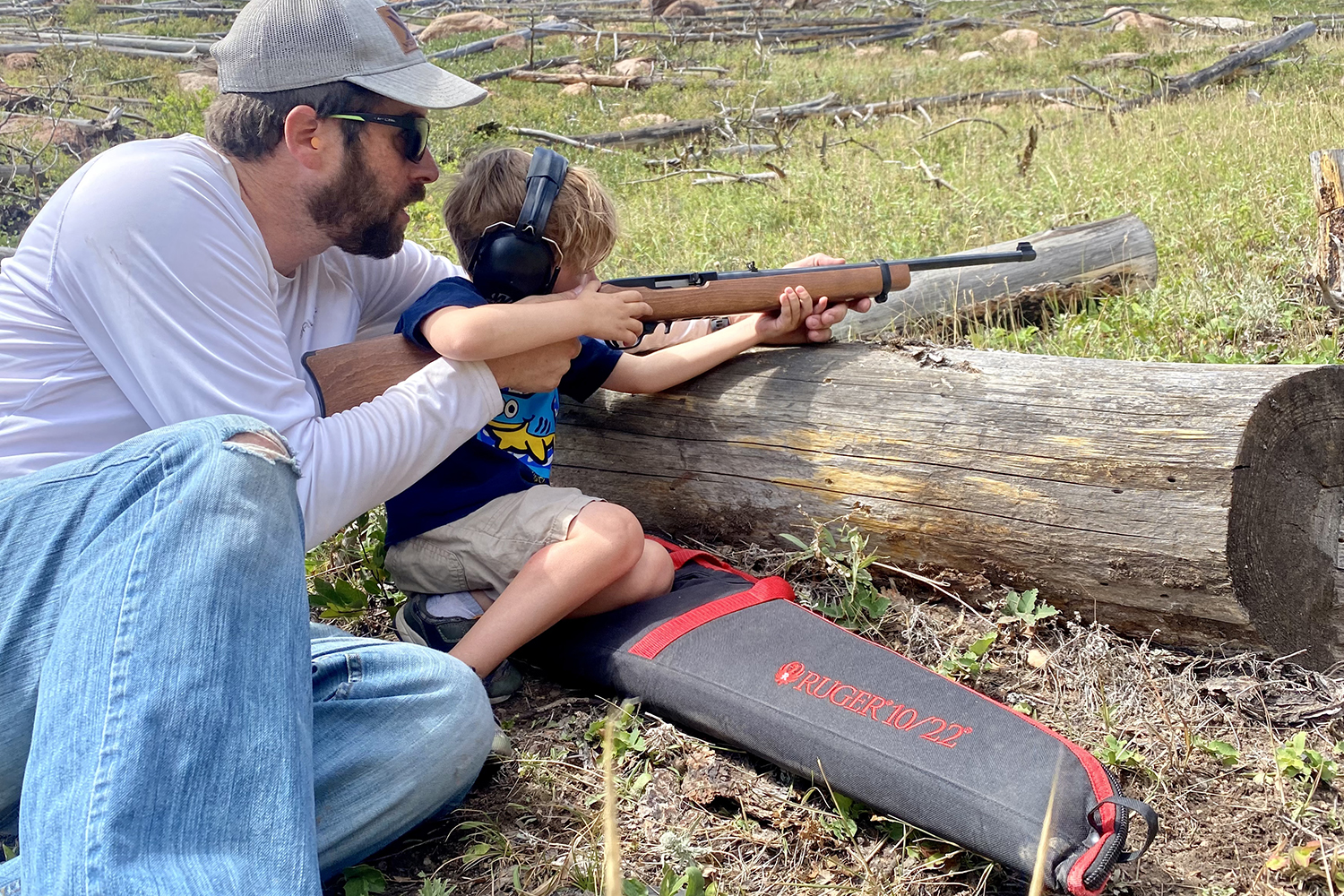
Willms, a Wyomingite with dozens of backpacking trips and wilderness hunts to his name, patched up his leg as he and his wife talked about what would be best for the kids. Rather than dragging them along, what if Willms and his wife gave them a more active role? They designated their 9-year-old as the trip leader. She would decide when to eat snacks and stop for lunch. She would keep people motivated. That control made all the difference in her attitude about that trip. By the time they made their boat on the other side of the island, there had been more smiles than tears as the family grew closer through the experience.
But as Willms started planning their next trip, his kids made it clear they didn’t want a repeat of the Isle Royale “vacation.” They wanted mellower adventures, shorter backpacking trips with less marching and more playing along the way.
That’s when Willms realized something critical: He’d pushed too hard. And if he kept pushing, he risked turning them away from the outdoors altogether. It would, essentially, result in the opposite of what he’d wanted in the first place.
He thinks that by next summer, they will be ready to do something bigger again. And he started including his older children in the planning. They watch YouTube videos of the area where they’ll go to understand the terrain long before they set foot in it. The girls now help decide on destinations and find routes. It gives them a stake in the trip.
“Kids can do anything,” he says, “but maybe we shouldn’t ask them to do everything.”
Meet Them Where They Are
A friend once told me that bribery is the act of getting someone to do something that’s not in their best interest. Incentives are what you use to encourage somebody to do something that is good for them. So my husband and I parent in the outdoors with incentives…like Jolly Ranchers.
“All you’re doing is making it more fun for her and connecting with her,” Dodd says. “If you’re finding you have to do extensive bribery, your child doesn’t want to be there. But if it’s something to keep them moving, that’s fine, and in a sense we all do that. We say we should get somewhere by lunchtime so we can sit down and have a beer. We do that, and we do it internally.”
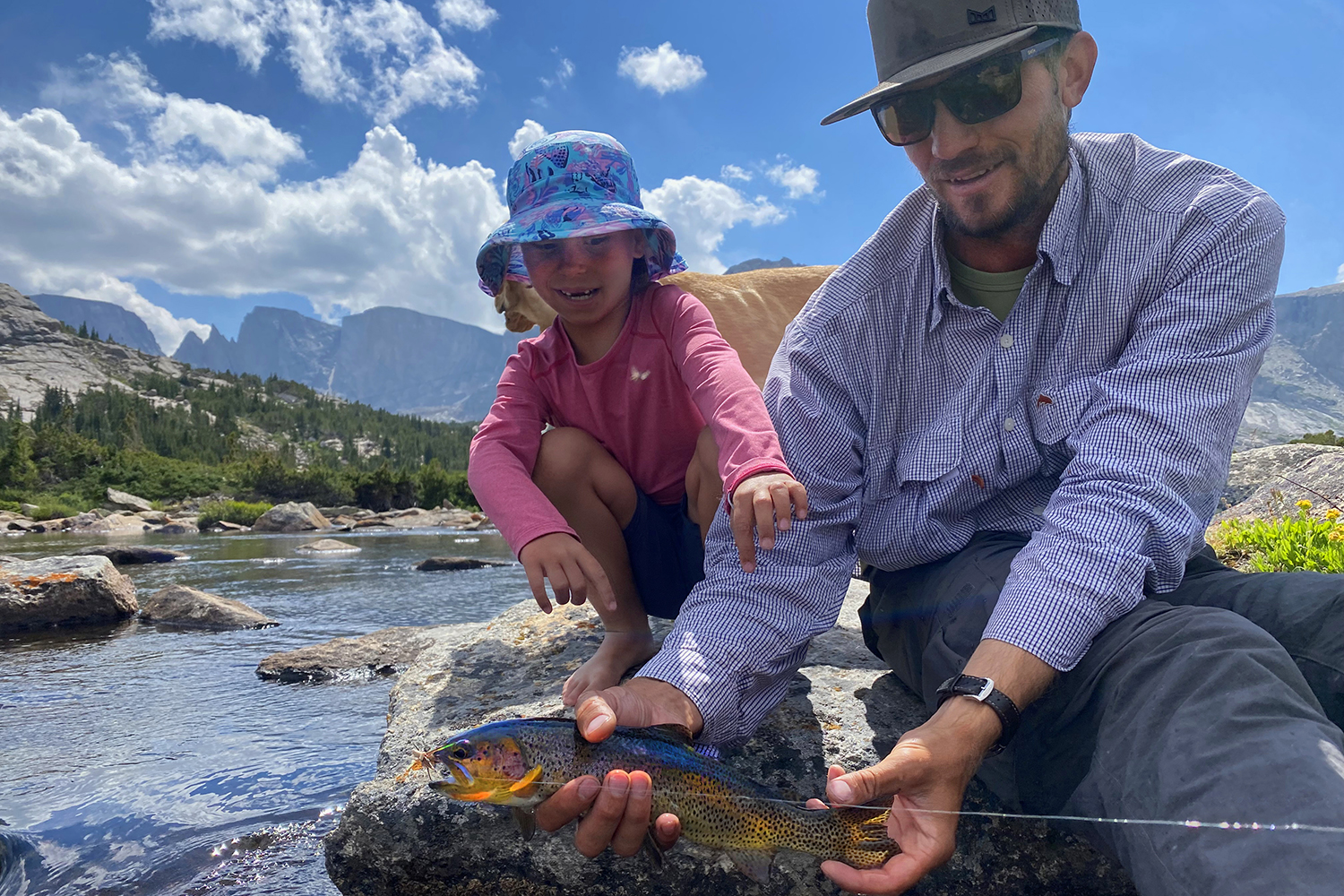
“You’re still moderating risk,” Dodd says. “A 6-year-old can’t give informed consent, but assuming you love your child, you will do that risk assessment for them.”
As with most decisions made while parenting, there’s no manual. And what constitutes an adventure—for kids and parents—is different from family to family.
“I don’t think any of us, as with any aspect of parenting, can look at what another family is doing and say, ‘That is extreme and wrong,’ or ‘You taking your kid on that adventure is wrong,’” Dodd says. “It’s about how that family has done the adventure, how skilled that family is, the extent to which that child has enjoyed previous experiences.”
Miriam is cautious by default. She gets it from me. And each time she tackles something a little scary—crossing a river by walking over logs, scrambling up a cliff face, hiking through a thunderstorm—she files it away for the next time. I think of these experiences as helping her build an internal library of feats—or, yes, risks—she now knows she can manage.
As I stared at the stars so many miles from that Wyoming trailhead, I wondered about where Miriam might falter. She has accomplished so much, but what happens when she slips on a log? What business do I have bringing my child this far into country with wolves and grizzly bears, moose and elk, slippery lichen-covered rocks, creeks and rivers, exposed peaks, vicious storms, and sections of trail marked by little more than scattered cairns and bits of metal nailed to occasional trees?
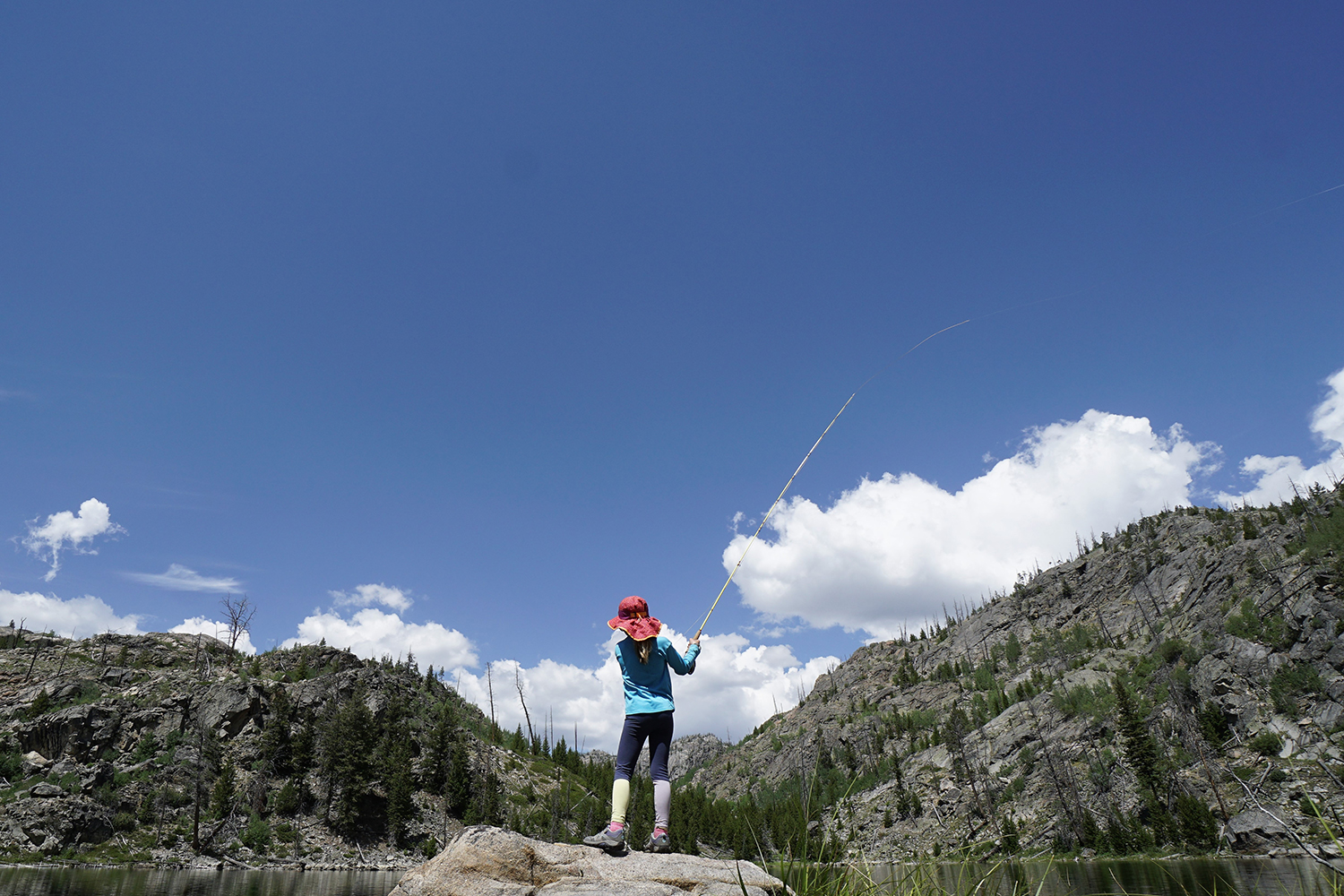
I could say I was doing this for her. I could say it was to help her build resilience, to help her see the bigger world, to ensure that a connection with nature becomes and remains a part of her soul. I could say it was to give her butterflies in her stomach and the confidence to overcome fear. But if I’m being honest, I could do all that in the mountains an hour or two from my house.
No, this is for her dad, and for me. As selfish as it sounds, I need this.
This backcountry trip lets us fully unplug, be somewhere our phones won’t work. I don’t have to think about each meal we cook tomorrow because our meals are already packed. But a part of me also needs Miriam here, with us. It helps me continue to build my own resilience, both as a person and as her mother. I can show up better for her when I know what she and I can do together.
Three days after we met that game warden on a sweeping expanse of mountain above the treeline, we dropped back down to a camp on the shores of two lakes. A river connected the two in a cascade over smooth granite shallow enough to wade into. Miriam had walked almost 8 miles carrying lunch, water, and snacks. She’d hiked 1,400 vertical feet and leaned hard into the wind and rain that blasted her in the face. She’d eaten candy after breakfast and before lunch.
And then that evening, kneeling on the side of that smooth cascade, she said, “Mom, is anyone luckier than us?”
And, for that moment at least, I had the answer to my questions.
Read more OL+ stories.
